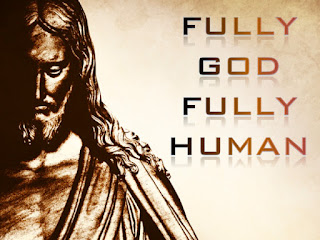Today I participated in Mass at the Irish Pontifical College in the morning and began to review a 1985 dissertation on controversy surrounding women's ordination since Inter Insigniores by Orlandus et Romero Fuller. Inter Insigniores was approved and signed by Paul VI on October 15, 1976. He asked for a declaration on the topic of women's ordination to be drafted by the Congregation on the Doctrine of Faith because of claims that the Church's prohibition against priestly ordination of women was more presumed than argued, and that women’s ordination was not a theological issue.
Pope Paul VI recognized the complexity and importance of considering the theological implications.
The congregation found that because the Lord Jesus
called forth only male apostles, the Church was not authorized to admit women to
priestly ordination. However, it seems that Jesus did call women to be apostles, i.e. the Blessed
Virgin Mary, Queen of the Apostles, Mary Magdalen, Apostle to the Apostles as well as fifteen generations of women called to apostolic service since the Holy See approved the founding of the Daughters of Charity in 1633. This point has been disputed from the moment the declaration
was issued.
According to the argument put forth by Fuller the main objection to ordination of women to the priesthood rests on the representative character of the ministry of the priesthood. Both the "object" of representation and the “mode” of representation would present obstacles for the faithful if the priest were a woman rather than the man. Addressing the obstacle posed by the "object" of representation, he asserts the significance of the male Incarnation of Christ and
the nuptial image of Christ as Bridegroom of the Church. For these reasons he finds it to be imperative that only a male person can act “in person Christi.”
Those opposed to these arguments assert that in the Mystery of the Incarnation, it is most significant that Christ took on human form, not the male gender. Furthermore, the nuptial image of Christ as Bridegroom and Church as Bride, is tainted by cultural sexism inherited
from Judaic tradition that understood the female sex as inherently inferior to
the male. Contemporary Christology centers on the significance of the
human and divine natures of Christ, two natures perfectly united in one person. The priest represents the mystery of this hypostatic union, not the male gender of Christ's human nature. The gender of Christ is neither essential nor relevant to our Redemption and Salvation. Christ's humanity is essential and relevant.
Some theologians take issue with what Fuller calls the “mode” of representation. This argument opposes the Thomistic
principles of “natural resemblance” and “sexual resemblance.” The assertion by Saint Thomas that women are
born in an inferior state and that a woman’s lack of natural sexual resemblance
to Christ disqualifies her a priori from
aspiring to the priesthood, was admitted in the declaration itself, and by all
subsequent papal proclamations, to be false. Therefore, no further argument against this assertion is necessary.
